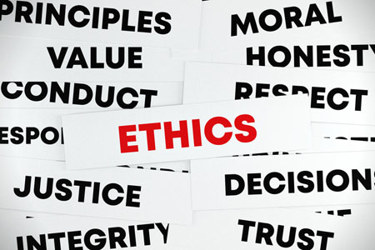Quality Engineers: Are You Making The Right Call?
by Eric Hinrichs, senior principal quality engineer (retired), Ethicon, part of the Johnson & Johnson Medical Device Companies

As a quality engineer, have you ever had the following conversation with a project leader?
Project leader: “Hey, do you have a minute?”
You: “Sure, what is it?”
Project leader: “Well, we need your signature on this validation completion report. As you know, the project is hot and the product launch is due next week. This approval is all we need to get the product released. You’re the last signature. Everything is fine, so just sign it and I will get things moving.”
You look at the report the project leader has handed you. You had reviewed it earlier when it showed up in your queue, but you saw red flags in the data analysis. There were outliers that were “explained away” and not included in the final analysis. Not just one or two, but many, and they were outliers by a lot. Something wasn’t right about them and the explanation to exclude them didn’t sit well with you. You know the product launch is the company’s number one priority; everyone is looking to this launch as a big win for the company, but these outliers….
You: “Sorry, but I need to understand these outliers you excluded. I do not align with the rationale in the completion report regarding them. I think there needs to be more investigation as to how and why they occurred.”
Project leader: “Ah, c’mon, the rationale is good. Everyone else has signed off on the report. They’re no big deal. Yeah, a few outliers happened, but that happens all the time. C’mon, we need this product launch to happen and you’re the last person to sign off. C’mon, as a favor for me. Trust me, the outliers are a fluke; there isn’t anything that is going to go wrong.”
So, what do you do? Sign off on the report as a favor or reject the report and ask for more data analysis and risk having management upset with you for the delay?
In quality we are often faced with such dilemmas. The above scenario is based upon a more innocent request early in my career. I wanted to be viewed as a team player. I was new and I didn’t want to look bad to management. I gave the project leader the benefit of the doubt. What happened? There was a problem with the product, and I became the project leader’s and management’s scapegoat, with the oft-stated comment, “Well, Quality approved it.” As if I was the only one that could have stopped the launch.
This is the tough part of the role Quality plays in a company: having the ethical fortitude to make the right decisions. Did I have a choice? I did, but I caved in favor of my rapport with the project leader and the fear of being perceived as a roadblock to the company’s goal of getting the product launched. My gut, my intuition, my sixth sense all told me not to approve the report, but the emotions behind helping a friend and not looking bad overwhelmed my common sense. The product did have issues and had to be redesigned.
What were my options? Did I have any? I did. What I should have done was get with the project’s quality engineer and review the raw data and their findings. Gain alignment on what really occurred during the validation. Once done, work up a synopsis of our findings, what options were available to ameliorate the situation, and what resources would be needed to fix the issue, as well as the best-case scenario for a new launch date.
True, no one would like this scenario, but I found that it’s best to be late and right then early and wrong. Management should understand the situation and align with it if the information and situation are clearly and properly framed and presented. No one likes delays, but delays for the right reason should be understood.
Pressure in the workplace is real and often overwhelming. Sometimes one needs to step back and take a deep breath and look at what options are available that are best, not only in the short term, but in the long term as well; remember to look at the bigger picture. One thing to consider in making a decision is what is often called the red-face test: In an audit, could you look at the auditor and tell them why you approved something without being embarrassed? Could you defend your decision and feel comfortable doing so?
That approach has helped me immensely in my career. You will often get people that will try to use your friendship or position to get something done and when there is a problem later, they are the ones leaving you hanging.
Ethics and doing the right thing are difficult conversations to have when a job, a career, or a reputation is involved. Doing the right thing in the end is the best solution regardless of what influences are happening around you. Remember to utilize data to support your position, present your position in a clear and concise manner, and provide options as solutions with timing and resource needs. Doing this will leave you in the best light with management and show that you are also coming to the table with solutions. If you ever seem at a loss as to what to do, remember what Teddy Roosevelt said: “In any moment of decision, the best thing you can do is the right thing, the next best thing is the wrong thing, and the worst thing you can do is nothing.”
Good luck; you’ve got this.
About the Author:
 Eric Hinrichs has more than 31 years in the medical device field in research and development on new products and processes, in operations on improving processes, and in quality on leading process and product validations and performing data analysis. He developed and led the implementation of numerous process redesigns while at Ethicon to improve product support execution. He authored an ASTM standard, worked on updates to United States Pharmacopeia (USP) medical standards, and helped develop medical standards for the European Association of the Surgical Suture Industry (EASSI) in Europe. He has co-authored a medical standard for India that is currently under consideration for adoption. He recently released a book on career advice, Perceptions and Expectations.
Eric Hinrichs has more than 31 years in the medical device field in research and development on new products and processes, in operations on improving processes, and in quality on leading process and product validations and performing data analysis. He developed and led the implementation of numerous process redesigns while at Ethicon to improve product support execution. He authored an ASTM standard, worked on updates to United States Pharmacopeia (USP) medical standards, and helped develop medical standards for the European Association of the Surgical Suture Industry (EASSI) in Europe. He has co-authored a medical standard for India that is currently under consideration for adoption. He recently released a book on career advice, Perceptions and Expectations.
